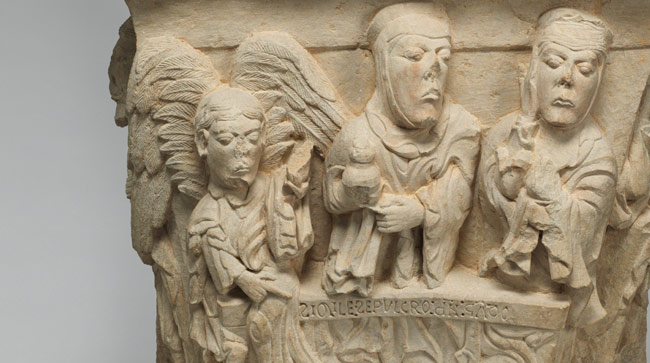Showcasing the breadth and depth of our collections—from ancient to modern times and across a variety of media—A Peek into Our Collections offers a window on what will be on view when our new facility opens to the public on November 16.
Capital of Engaged Twin Columns from Abbey of Santa María de Lebanza, c. 1185–90, Harvard Art Museums/Fogg Museum.
This capital, one of just two that remain from the Romanesque abbey church of Santa María de Lebanza, in Palencia, Spain, would remind viewers of the Christian promise of Resurrection. A narrative wraps around the entire object, which once sat atop an engaged twin column and likely would have been viewed from three angles. On the front, an angel sits on the edge of a tomb; two women stand nearby, and a third woman approaches (appearing on the right face of the column). These women are the three Marys, who went to Christ’s tomb only to find it empty. The figure holding a gardening hoe, on the left face, may be the gardener for whom Mary Magdalene mistook the risen Christ. An inscription above the entire scene reads: “Rodrigo Gustioz, a very good man, made this arch. Knights, pray for him.”
See other highlighted objects here.








